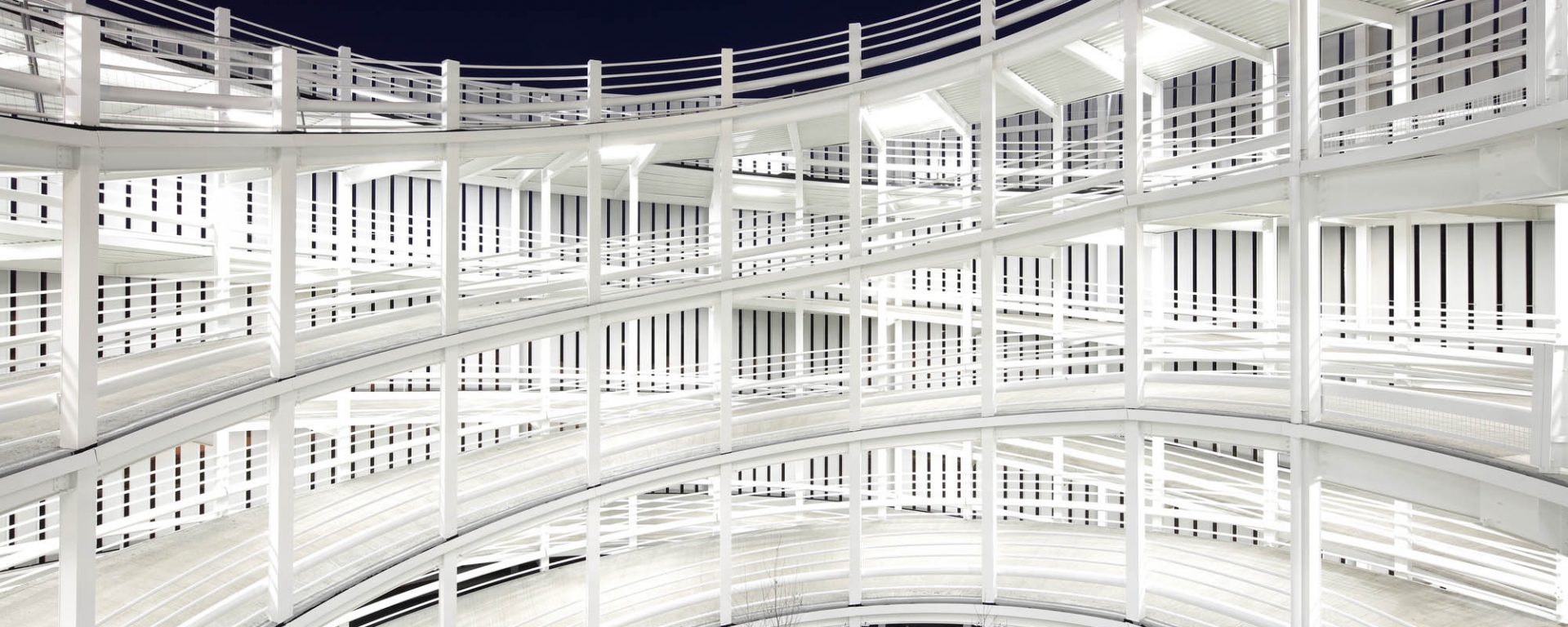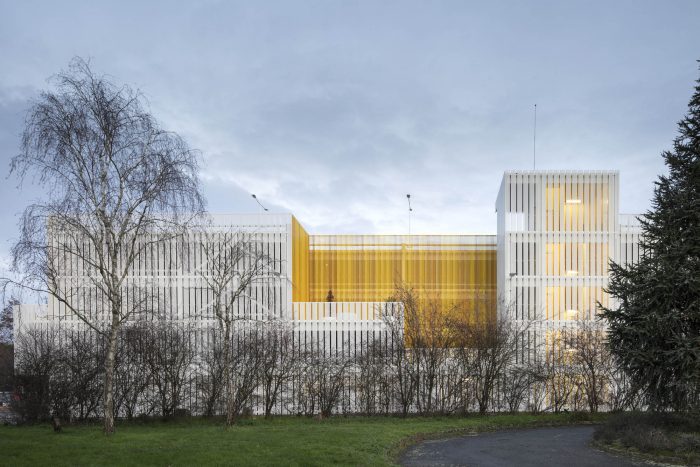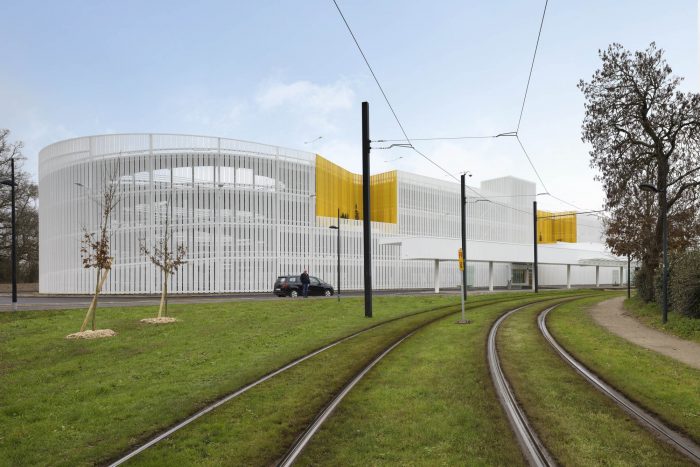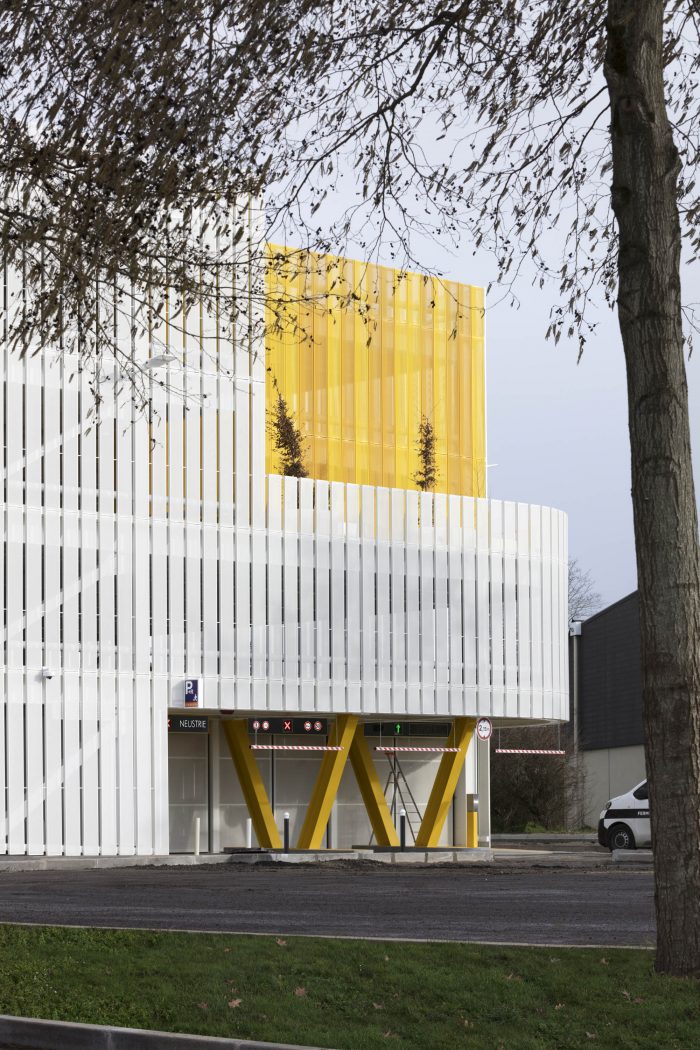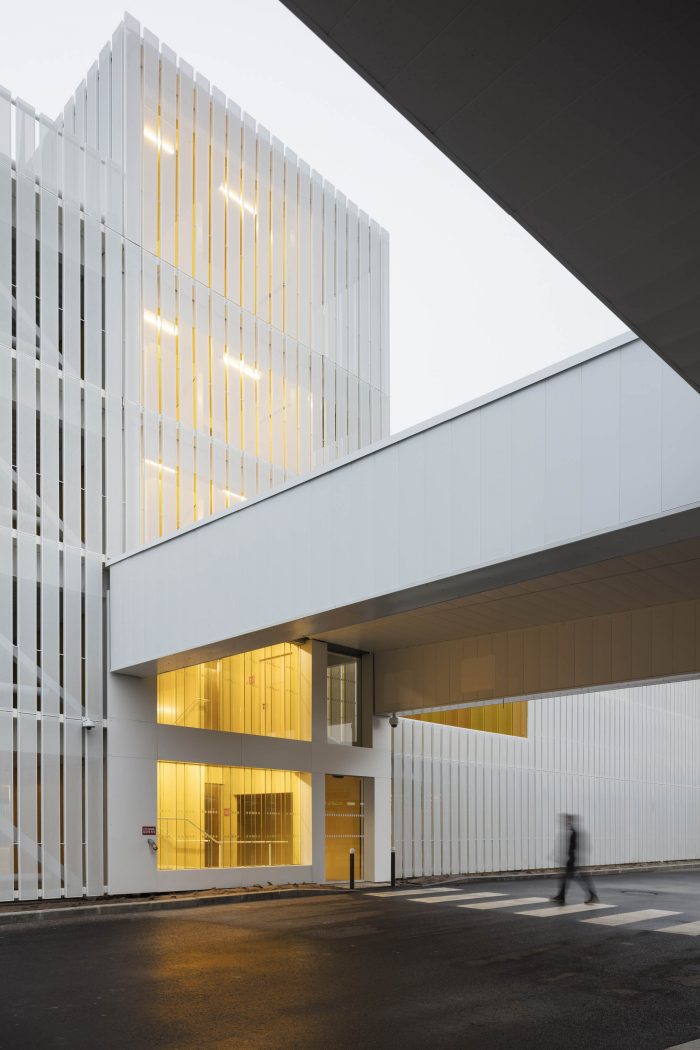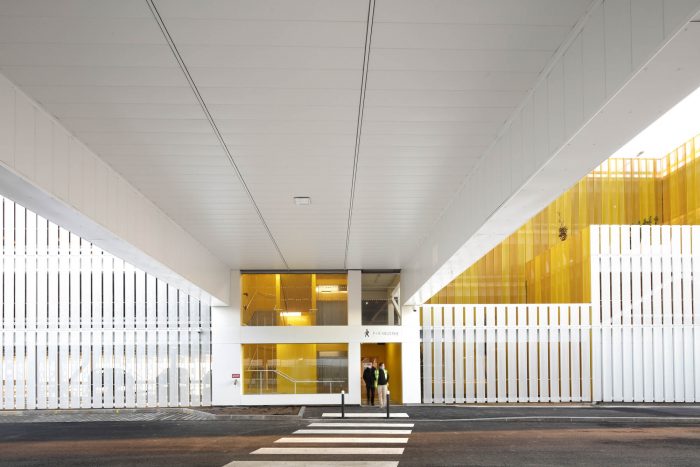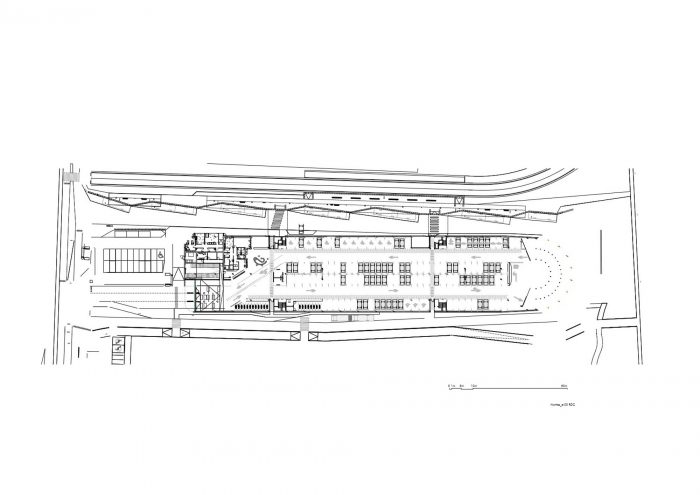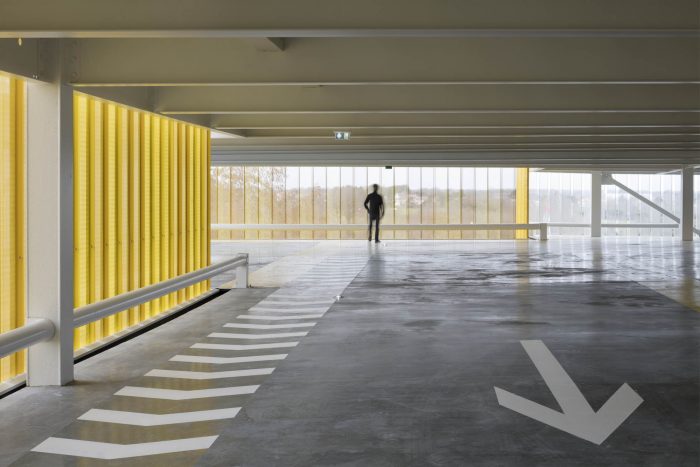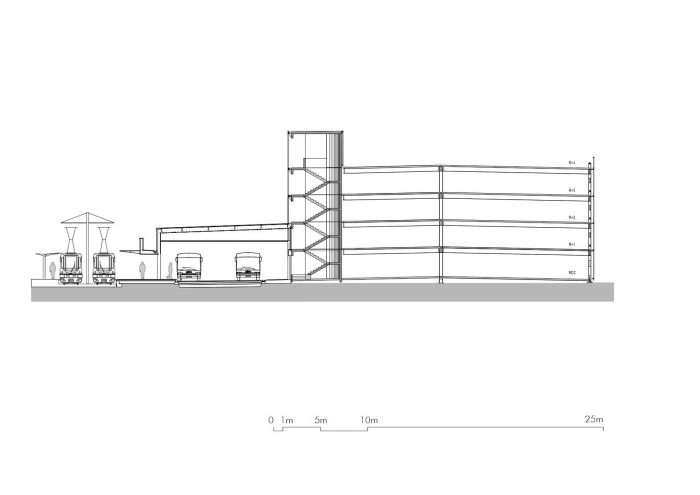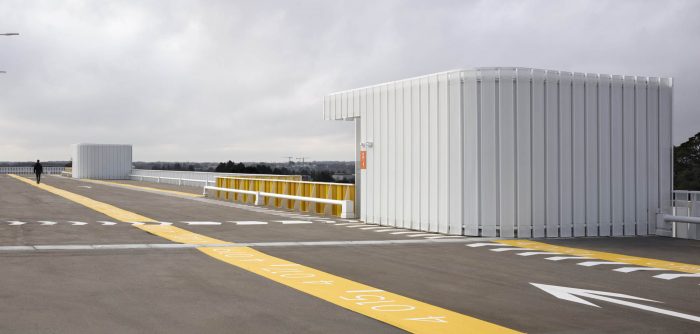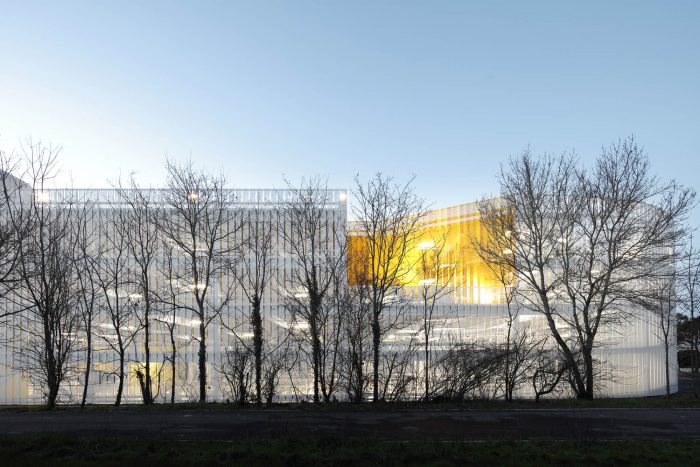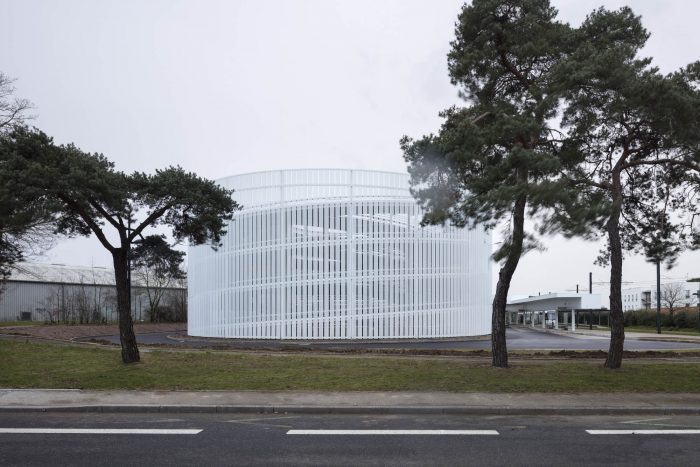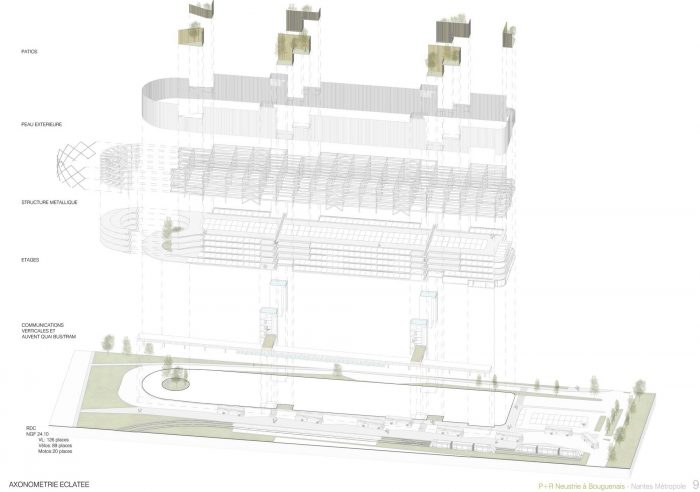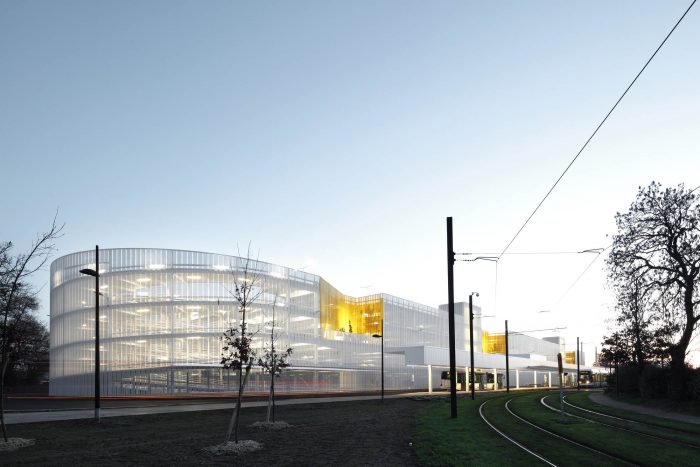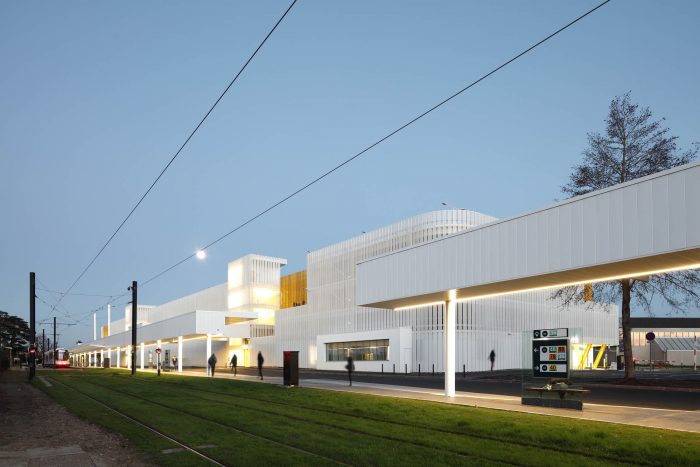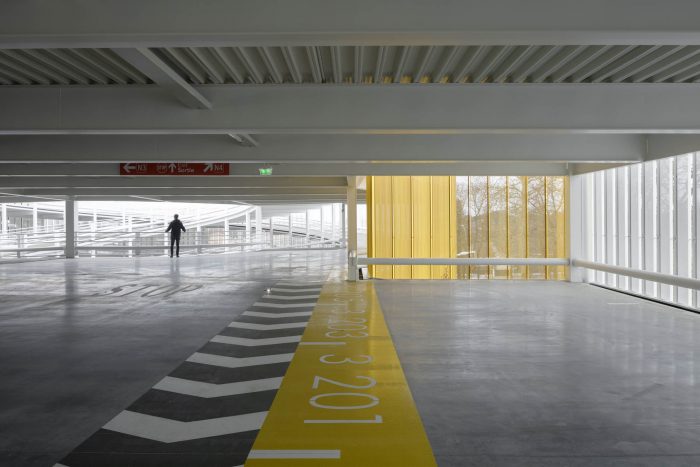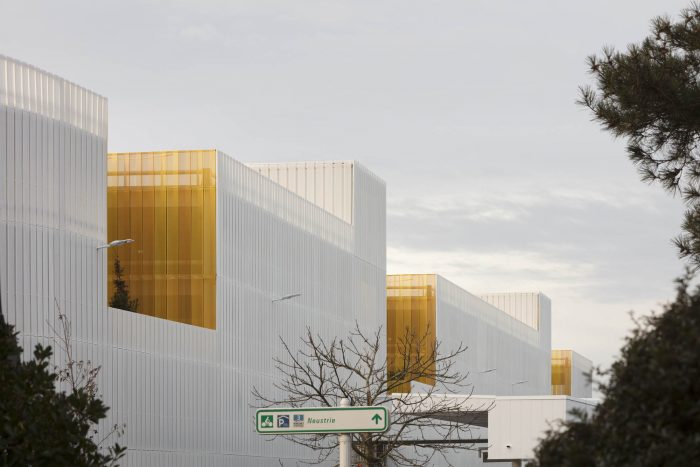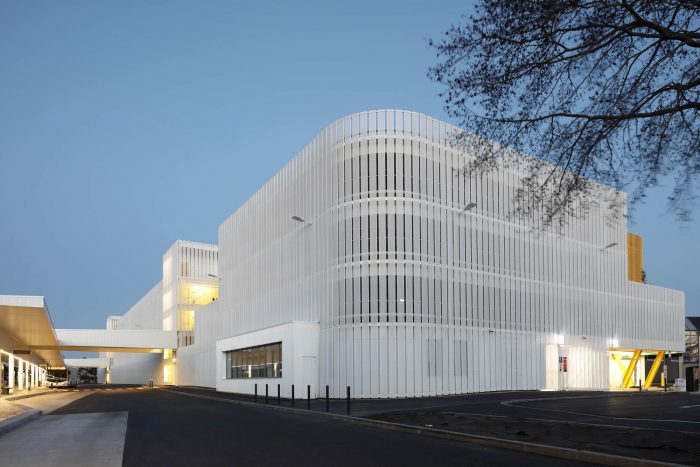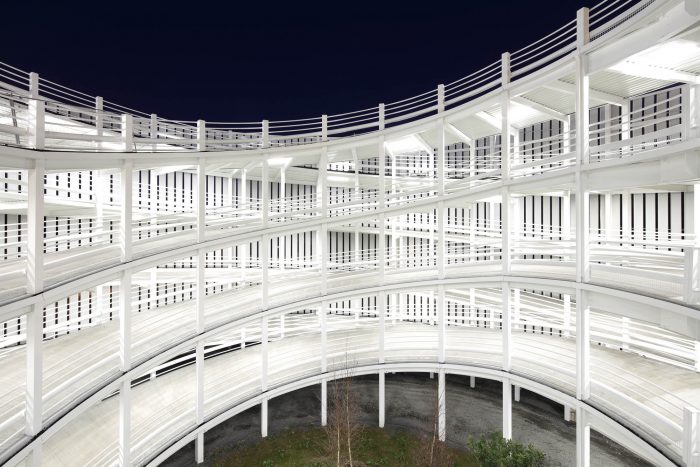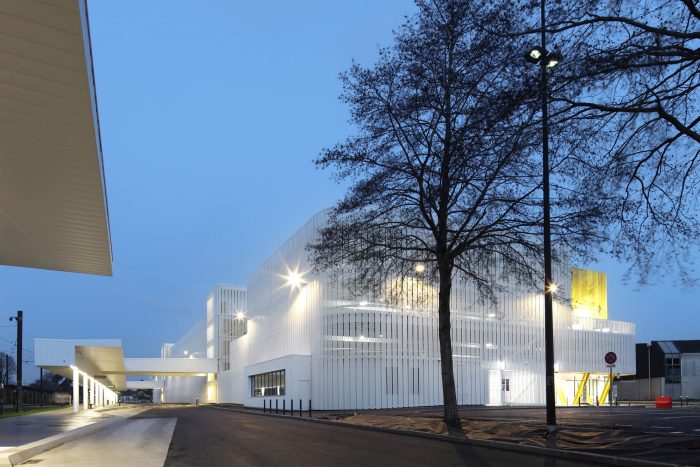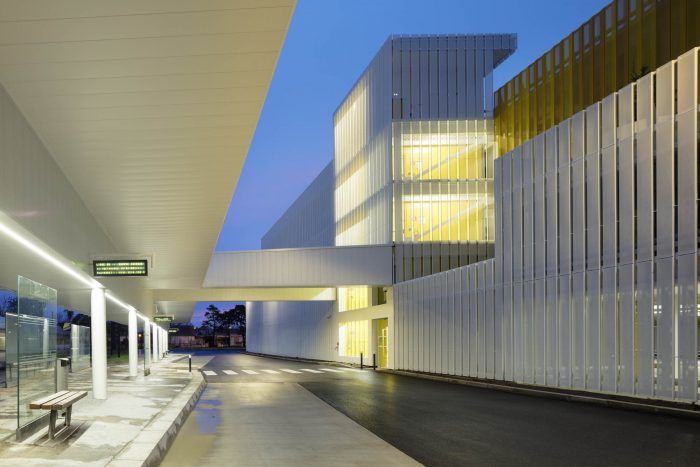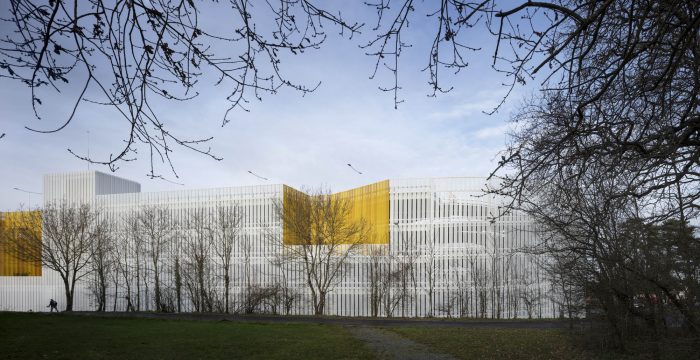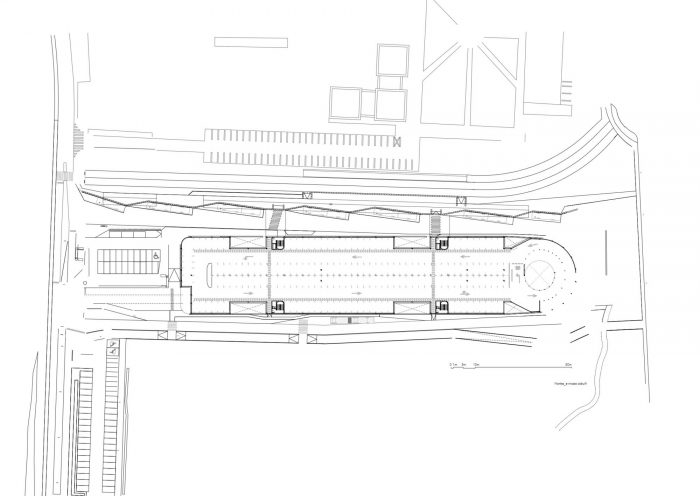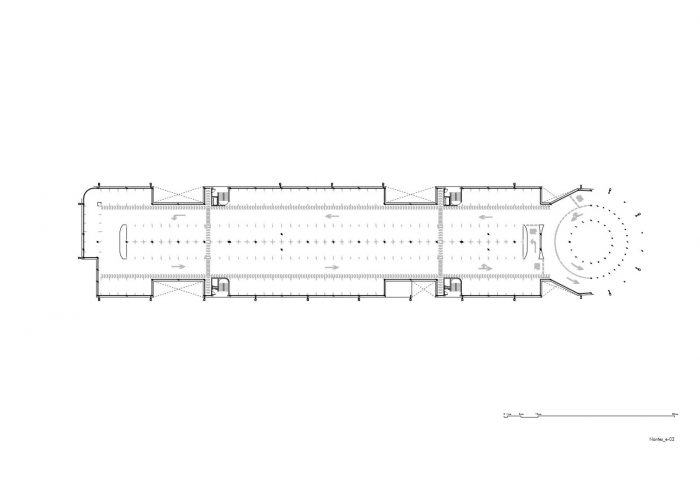该项目是公共竞赛的获胜者,位于南特东南的Bouguenais镇,是一个低密度的住宅环境。该提案是南特大都会希望改善城市公共交通网络的一部分。
The project, a winner of a public competition, is located in a low-density residential environment, in the town of Bouguenais, southeast of Nantes. The proposal is part of Nantes Metropole’s desire to improve the city’s public transport network.
该建筑群由一个停车场和一个多式联运的公共汽车和有轨电车站组成,通过一个连续的天棚相互连接。
The complex is made up of a car park and an intermodal bus and tram station connected to each other by a continuous canopy.
停车场由三层有顶棚的楼层和第四层无顶棚的楼层组成,可容纳782辆汽车、20辆摩托车和50辆自行车。除了管理场所外,该建筑还包括为使用联运站的巴士司机提供的办公室。
The car park consists of three covered floors plus a fourth uncovered level, with a capacity for 782 cars, 20 motorcycles, and 50 bicycles. In addition to the management premises, the building includes offices for bus drivers who use the intermodal station.
鉴于它所处环境的特点,拟议的解决方案对城市和景观的插入给予了极大的重视。这就是为什么所有的项目决策都是为了保证运输中心的最佳运作,以及减少其影响和体积。
Given the characteristics of the environment in which it is located, the proposed solution gives enormous importance to urban and landscape insertion. That is why all project decisions are aimed at guaranteeing both the optimal operation of the transport center and the attenuation of its impact and volume.
为了有利于建筑的整合,我们制定了各种策略。首先,景观庭院已被纳入外墙,与垂直通信核心相吻合;通过这一策略,建筑的体积被分割,同时,体验得到改善,用户的自然取向也得到支持。建筑的庭院在停车场的不同层面上增加了尺寸,有利于光线的进入和露台的出现,种植的树木可以在露台上生长。另一方面,从体积上看,主楼显得很轻,这要归功于穿孔金属板的闭合和建筑末端的圆角,在入口处和另一端都有一个双螺旋的坡道,组织了汽车的垂直流动。
In order to favor the integration of the building, various strategies have been established. In the first place, landscaped courtyards have been incorporated on the facade, coinciding with the vertical communication core; a strategy with which the volume of the building is divided, at the same time that the experience is improved and the natural orientation of the users is favored. The building’s courtyards increase in dimension as they ascend on the different levels of the car park, favoring the entry of light and the appearance of terraces where the planted trees can grow. On the other hand, volumetrically, the main building appears light, thanks to a closing of perforated metal sheets and the rounded corners of the building’s end, both at the access and at the opposite end where there is a double-helical ramp that organizes the vertical flows of cars.
该项目特别注意对所有流量的管理,以避免行人和车辆、公共汽车和私家车之间的交叉。选择双螺旋坡道作为停车场内上行和下行车辆的主要枢纽,是优化该方案运行的关键。在外部,坡道的形状遵循公共汽车的自然转弯,允许它们与建筑接壤,以尊重客户提出的通过同一街道提供车站出口和入口的要求。在内部,坡道的展开提供了一个外部到达坡道,供汽车爬到每个楼层,以及一个内部出口坡道,一个双反螺旋线,每个坡道从一端开始,允许直接下降,没有交叉。
The project pays special attention to the management of all flows in order to avoid crossings between pedestrians and vehicles, buses, and private cars. The choice of a double helical ramp as the main hub for ascending and descending cars in the car park has been key to optimizing the operation of the proposal. Towards the outside, the shape of the ramp follows the natural turn of the buses, allowing them to border the building in order to respect the requirement imposed by the client to offer the exit and entrance of the station through the same street. On the interior, the ramp unfolds offering an exterior arrival ramp for the cars to climb to each of the floors, and an interior exit ramp, a double reverse helix, where each ramp starts at one end to allow a direct descent without crossovers.
公共汽车站与停车场和有轨电车站平行。因此,联运站用户的不同交通方式之间的旅行距离减少了,考虑到靠近南特机场,这是一个关键方面。
The bus station runs parallel to the car park and the tram station. The travel distances between the different modes of transportation of the users of the intermodal station are therefore reduced, a key aspect considering the proximity to Nantes airport.
该项目涵盖了未来汽车站城市化项目所涉及的所有学科,包括其通道和景观处理,此外还有与新停车场建设相关的学科,包括标识。IDOM负责该项目从构思到施工过程的项目管理。
The project covers all disciplines involved in the urbanization project of the future bus station, including its accesses and landscaping treatments, in addition to the disciplines associated with the construction of the new car park, including signage. IDOM has been responsible for the project from its conception to the project management of the construction process.
Architects: IDOM
Area: 25000 m²
Year: 2020
Photographs: Aitor Ortiz, Juan Cardona
Project Director:Gohar Manrique San Pedro
Project Architects:Inés López Taberna, Iñaki Garai Zabala, Gohar Manrique San Pedro
Collaborating Architects:Luc Davy
Project Management:Gohar Manrique San Pedro, Aurélien Richard, Ana Robles Bustamante
Structures:Carlos Castañón Jiménez, Romina Gónzalez Hierro, Héctor Mínder Rodríguez
Lighting:Miguel García Castillo
Water:Arturo Cabo Ordóñez
Electricity:Arturo Cabo Ordóñez
Process Installations:Arturo Cabo Ordóñez
Interiors:Inés López Taberna, Iñaki Garai Zabala, Gohar Manrique San Pedro
Air Conditioning:Fanny Legaret
Construction Management:Inés López Taberna, Iñaki Garai Zabala, Gohar Manrique San Pedro, Luc Davy
Administration:Clarisse Guiraud
Construction Execution:Olivier Roux
Climate Installations:Etamine
Technician Architect:IDOM
Country:France

